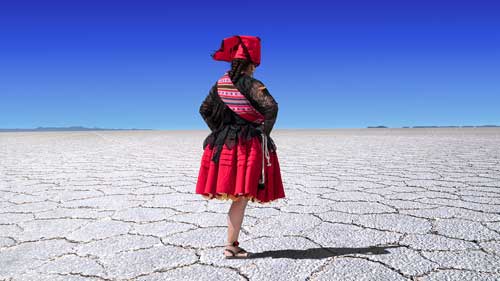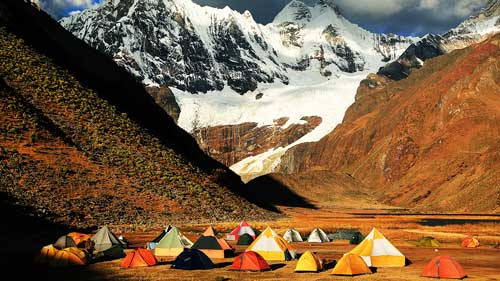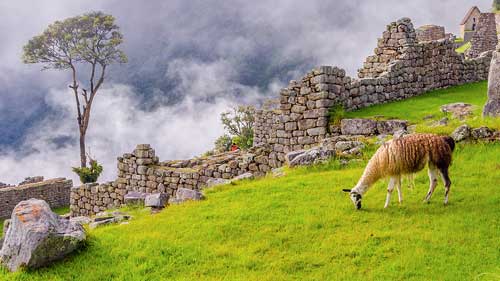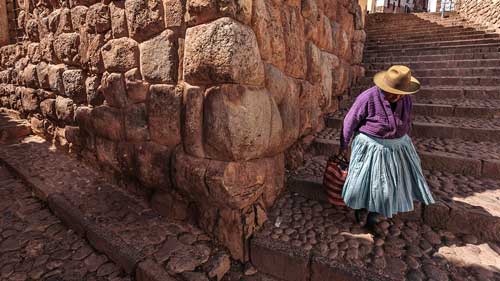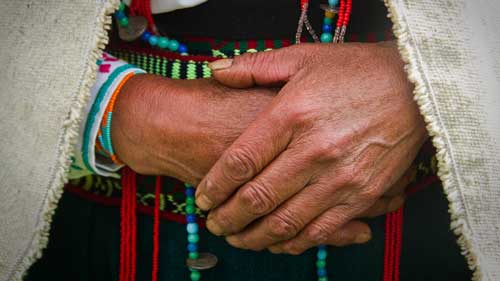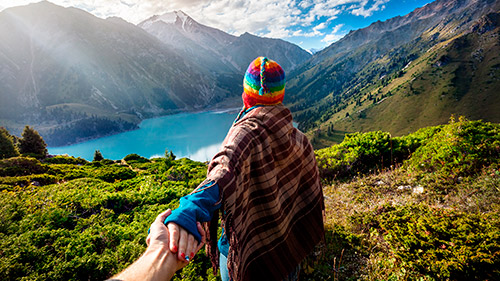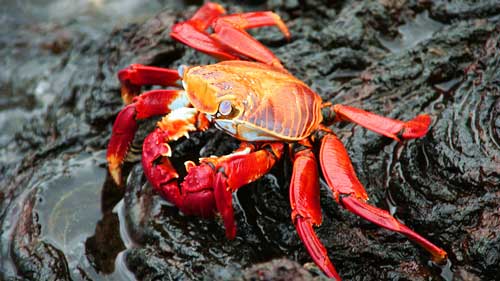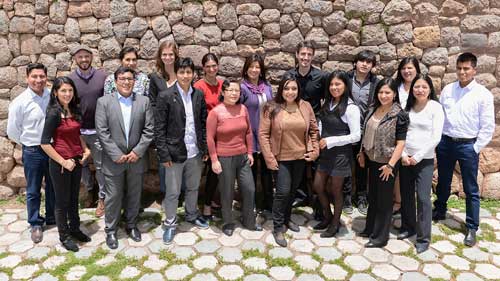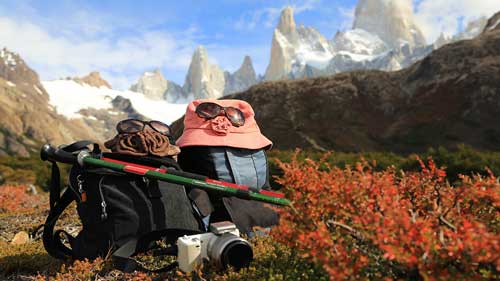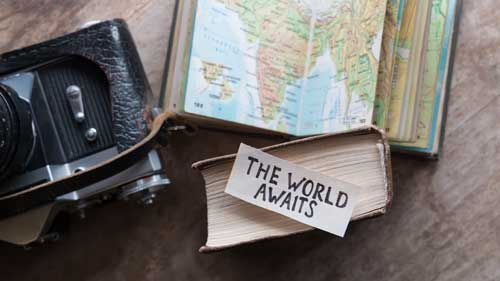What destinations can I visit?
PERU
Southern Peru
- Cusco Region:
This is where you will find Machu Picchu, which is definitely the highlight for many and worth at least an overnight trip, if not visits on two days. Around Machu Picchu many people visit towns like Ollantaytambo and Pisac (Inca Ruins), Maras (salt pans) and Moray (Inca ruins), depending on interests and the amount of time they have. These visits are usually done from a hotel based in the Sacred Valley, where these towns are, although you can also access it from Cusco. Cusco is a historical and cultural gem which is worth at least a full day if not a few days to visit.
Between 5 and 7 days is a great amount of time to visit this area.
- Tambopata Jungle:
This is the jungle region which can be accessed easily from Cusco by a short flight. This area combines a nice jungle experience with a little luxury and good accessibility.
Three days is the minimum and many people enjoy 4 to 5 days here.
- Manu Biosphere reserve:
This area of the jungle is a little more remote (it takes longer to get here) and lodges are little more rustic. Manu is generally considered to be a much better wildlife experience than the Tambopata region, if you have the time.
4 days is the minimum time recommendation for this area.
- Lake Titicaca:
Puno is the base for visits to Lake Titicaca. It is not a great town in itself, but if you are interested in beautiful natural areas as well as interesting history and culture, it is a great place to visit. The Uros Floating Islands, are a way to see a different way of life, whilst Taquile is definitely a natural beauty as well as still maintaining a rather traditional way of life. Some people find this area very touristy, since everyone who goes to Puno does the same tour basically, but I certainly enjoy it. If you want to get further away from the touristy side of Lake Titicaca, there are a couple of hotels – Titilaka and Suasi Island Lodge – which are outside Puno and help you to enjoy the beauty of the area. They are considered ‘luxury’ properties though and come with the price tag.
You will need at least 2 days to get here and visit the lake, 2 nights is best.
- Arequipa Region:
Arequipa is a very delightful colonial town with some interesting museums and architecture. Many people use this as a base for visiting the Colca Canyon, which is one of the deepest canyons in the world and a great place to see the majestic Andean condor.
For Arequipa itself 1 day is enough and 2 days for Colca Canyon is a good amount of time.
Central Peru
- Lima:
Peru’s capital city is Lima, a big bustling city with great shopping, museums and food. Some people just stop here for a few hours between flights, whilst other can spend several days here. Museums and attractions include the Museo Larco (a private collection of ceramics detailing the history of Peru from long before the rein of the Inca), The Plaza de Armas (with the cathedral, presidential palace and San Francisco Catacombs), Huaca Pucllana (restored pre-Inca temple), The Magical Water Circuit at the Parque de la Reserva, or a culinary tour. There is also Pachacamac archaeological site, around 45 minutes south of Miraflores if you want to see non-Inca architencture.
Half a day is sufficient for a lot of people, but 1-2 days allows you to experience Lima fully.
- Ica Region:
Many people come here to see the Nazca Lines, but it’s only really worth it if you want to do the flyover. People also enjoy visiting the Ballestas Islands where there are sea lions and the rare Humbolt penguins, or to see the interesting eco systems of the Paracas Reserve. Ica does have an interesting museum and town center, or the nearby Huacachina Lagoon and the surrounds dunes make a very interesting and different stop.
Parts can be visited in 1 day, but 2 to 3 days are needed to explore the whole region.
- Huaraz:
The Cordillera Blanca is home to some of the best hiking, climbing and outdoor adventure in Peru. There are some great day hikes as well as trekking circuits that take anywhere from to 4 to 10 days or upwards.
Northern Peru
- Iquitos:
People enjoy visiting the Iquitos area for wildlife you can’t see in other areas, such as the grey and pink river dolphins. Land-based lodging is generally more rustic here than in the southern jungle, but the Pacaya Samiria National park is a favorite for wildlife enthusiasts. More luxurious lodging are available on the luxury river cruises, some of which (Aqua and Aria) travel to the headwaters of the Amazon River.
You need at least 4 days (minimum for the cruises) for a good experience here, probably 5.
- Truijillo/Chiclayo:
Trujillo and Chiclayo are gateways to pre-Inca cultures such as the Moche and Lambayeque cultures and are great for giving a different side to the history. The key sites in this area are the Huaca Rajada, Museum of the Señor de Sipan, Huacas del Sol y de la Luna. Parts of Truijillo show off beautiful colonial architecture and Huanchaco is a lovely beachside town, showing more of the northern coastal culture.
Visits will require 2-3 days.
- Chacapoyas:
This region is still somewhat remote and ‘off the beaten path’ but very rich historically. The town of Chachapoyas is set on the edge of the jungle (cloud forest) and acts as a gateway to the little visited sites of Kuelap and Leimebamba and the funerary complex of Revash. You can only access this area by car from Chiclayo and some of the attractions can only be visited on horseback or on foot.
You will need at least 4 days, from Chiclayo.
- The Northern Beaches of Peru:
Mancora is the most famous area for beaches in Peru. The beaches along this section of coast are world-renowned surf beaches and it is very popular with local tourists (form Lima) during December through February.
You will need a minimum of 3 days to make the most of a visit here.
ECUADOR
- Galapagos Islands
This is the main attraction of Ecuador for most people, a few hours off the coast. Trips to the Galapagos Islands are great for wildlife watching and seeing a great variety of geographical formations, doubling as a ‘beach holiday’.
4 days minimum, 5 days or more are recommended.
- Central Highlands
The central highlands of Ecuador include the city of Quito, with its pretty colonial center (and more modern northern sector) as well as access to the Equator Line. The surrounding area includes the Avenue of Volcanoes, which is a great area for adventure activities as well as towns like Otavalo, famous for their arts and crafts. The Mindo cloud forest area is a few hours from Quito for those who would like a different experience and some people enjoy visiting the colonial gem of Cuenca.
- Amazon Rainforest:
The main area of the amazon Rainforest that is visited in Ecuador is the Yasuni National Park. There are some really lovely lodges here and great wildlife spotting opportunities.
The minimum stay is 4 days 3 nights, with 5 days recommended.
BOLIVIA
- Highlands:
The Bolivian highlands are a harsh but beautiful environment with lots of unique geography: the high mountains of the Cordillera Real, the salt lake/desert of Uyuni, the mountains and mines of Potosí and of course Lake Titicaca. The capital cities of La Paz and Sucre show very different sides of the country. Adventure sports, such as mountain climbing (Huayna Potosí), hiking, paragliding and mountain biking (on the Camino de la Muerte for example) are all possible in the highlands. There are also famous archaeological sites, like Tiwanaku, that are a pull for people really interested in archaeology.
- Amazon Rainforest:
The area of Rurrenabaque and Madidi National park are interesting areas to visit if you want to get a taste of the jungle in Bolivia.
Packages start from 3 days.
- Santa Cruz and around:
Santa Cruz is Bolivia’s second largest city and very different to La Paz, being in the low-lying jungle region. The city itself is a popular place to relax in, but most people spend time here to visit the Jesuit Missions nearby. Every two years a baroque music festival is hosted by the missions.
2-3 days recommended.
How long do I need for my trip?
GENERAL
Most of the time you will be fine with a pair of comfortable shoes, sports footwear of some kind is usually preferable as the archaeological sites will often involve some walking on uneven ground.
TREKKING
A pair of good hiking boots, with sufficient ankle support and good grip are necessary. They should be waterproof if you are hiking during the rainy season (November through April). Experienced hikers are often happy in hiking shoes or even a sturdy pair of tennis shoes/trainers, but that is personal choice.
JUNGLE
Hiking shoes/boots can also be useful, but lodges and cruises provide rubber boots of various sizes for if the ground is very wet. The maximum size they tend to have is EUR45, so if you have larger feet, you might like to bring a good pair of waterproof, high-ankle hiking boots during the rainy season. Open-toed shoes and sandals are NOT recommended.
Do I need 2 days in Machu Picchu?
You don’t need two days in Machu Picchu, but at Kuoda we often include two in your itinerary since Machu Picchu is usually the highlight and sometimes a ’bucket-list item’ for a lot of our guests. We find that two days gives you a chance to properly explore and enjoy the site. If you only want to visit on one day, we would still suggest spending one night in Aguas Calientes, either before or after your visit, as a full day tour from Cusco gives you only a couple of hours at the site, which we don’t feel is enough.
Is it worth spending time in Lima?
This depends on you and your preferences. If you like cities, boutique stores, galleries and museums, it is probably worth it. Lima is also known as the ‘Culinary Capital of South America’ in some circles, so if you like food, a culinary tour or just visits to a variety of restaurants might be well worth the time. On the other hand, if you only have limited time in Peru and are not too interested in cities, the general opinion is that you would be better off visiting one of the more unique destinations than Lima.
I would like to spend some time at the end at the beach, what are my options?
Peru does have some excellent beaches – especially for surfing – but these are located far to the north. You will need several additional days (and extra flights) to visit the northern beaches. Lima and the Paracas area are on the coast and therefore have some beaches, but they are not really pristine or picturesque and can be very crowded in December and January. If you are travelling between April and November, it is not worth spending extra time in Lima/Paracas to get some beach time as temperatures are cool (16°C/61°F average), skies are overcast and the sea is not particularly warm (16°C/61°F average).
These areas are worth visiting at any time of the year for their other attractions though.

